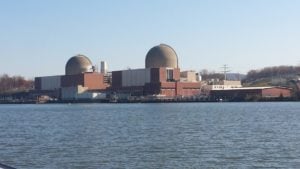No, gas plants aren’t needed to replace Indian Point, says NYISO
 In his recent Times Union guest column “Solar, wind won’t come in time in New York,” Jerry Kremer wholly misrepresents the findings of the New York Independent System Operator (NYISO)—the state’s electricity grid operator—about the reliability of New York’s energy after the closure of Indian Point. Kremer wrongly claims that “no fewer than three natural gas plants” would be necessary to replace the nuclear plant’s generational capacity.
In his recent Times Union guest column “Solar, wind won’t come in time in New York,” Jerry Kremer wholly misrepresents the findings of the New York Independent System Operator (NYISO)—the state’s electricity grid operator—about the reliability of New York’s energy after the closure of Indian Point. Kremer wrongly claims that “no fewer than three natural gas plants” would be necessary to replace the nuclear plant’s generational capacity.
In reality, NYISO concluded that instead of building new gas-fired power plants to replace Indian Point, a mix of clean sources could make up for the modest additional need. The report first determines that the grid already has enough capacity to cover 1,900 of Indian Point’s roughly 2,000 megawatts when the 2021 closure rolls around, and the New York will then have six years to cover an additional 500 megawatts.
Based on these findings, NYISO proceeds to assess two scenarios, one with natural gas replacement, and one without. Its key finding is that the grid would remain reliable in either scenario. NYISO confirms: “resource needs could potentially be met by combinations of solutions including generation, transmission, energy efficiency, and demand response measures.”
In taking a conservative approach to predicting future energy availability, the NYISO report even omits consideration of viable renewable projects that could make up for the need, such as Champlain Hudson Power Express, a 1,000-megawatt transmission line that could deliver low-carbon surplus hydropower from Quebec to New York City.
It is unsurprising that Kremer could so completely misread the NYISO report when he also ignores the age and deterioration of Indian Point, which just restarted after yet another two-week unplanned shutdown. Closing this aging and increasingly dangerous nuclear power plant creates an incredible opportunity for New York to lead on smart, clean, efficient and sustainable energy.
